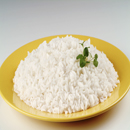Diabetes has become a global epidemic over the past couple of decades, and the World Diabetes Association states that approximately 6.4% of the global population are diabetics. The percentage of diabetics varies widely by country however, with the United States and India on the higher end of the spectrum and China at the highest end with almost 10% of their total population suffering from it.
Advertisement
Diabetes Basics
Diabetes is a disease that is characterized by chronic high blood sugar levels caused by complications with the blood-sugar regulating hormone insulin. There are two types of diabetes. Type-1, which is also referred to as juvenile or insulin dependent diabetes, is a condition where the pancreas doesn’t produce any insulin. Unfortunately, there is currently no known method to prevent or cure diabetes of the type-1 variety. Type-2 diabetics, on the other hand, do produce insulin, however they either do not produce enough or they are insensitive to it. It is estimated that 80% of all type-2 diabetes cases are due to lifestyle factors. It is therefore possible to both prevent and cure diabetes of the type-2 variety. Most people are well aware that sugar and processed foods can increase type-2 diabetes risk; however a surprising new offender has recently been discovered. On March 15th, 2012 Harvard Health researchers claimed that white rice could be a part of the ever-rising diabetic issue.
The Research
In order to find out if there was a correlation between rice consumption quantities and diabetes risk, researchers at Harvard Medical School, Boston, USA, conducted a systematic review and analysis of 4 previous studies. Two of the studies were conducted in Asian countries (China and Japan) and the other two were conducted in Western countries (USA and Australia). The four studies combined included 352,384 participants, all of whom were not diabetics at the study baseline.
The researchers found a significant correlation between the quantities of white rice that individual’s consumed and the likelihood for developing type-2 diabetes. In fact, the analysis found that the highest level of white rice intake correlated with a 27% increased risk for diabetes. In addition, an individual’s risk for becoming diabetic increased by 10% for each increased serving of white rice that they consumed! Perhaps this explains why China has the highest percentage of diabetics—the Chinese population consumes an average of four portions (625g) of cooked rice per day! In fact, the research found that Asian subject with a high intake of white rice had a 55% greater diabetes risk then Asian subjects who consumed little to no white rice.
Advertisement
How White Rice Increases Diabetes Risk
According to Harvard Health researchers, there are two reasons why white rice vastly increases your risk for developing type-2 diabetes. To understand the first reason, you must first understand the glycemic index (GI) of foods. The glycemic index is the measurement used to determine how much a particular food will raise an individual’s blood sugar levels. Consuming a diet full of high GI foods will result in chronic high blood sugar levels and excessive insulin secretion; both of which contribute to the loss off the insulin secreting function of your pancreas and consequently the onset of diabetes. Similar to sugar and most highly processed foods, white rice has a very high GI, and so it naturally follows that consuming large quantities of it will increase your risk for developing diabetes.
Secondly, white rice has a lower nutrient profile than brown rice, and it contains measurably less fiber, magnesium and vitamins; all of which can help to lower your risk of type-2 diabetes As such, the Harvard Health Researchers believe that a high consumption of white rice may increase diabetes risk because it results in a lower intake of these nutrients.

